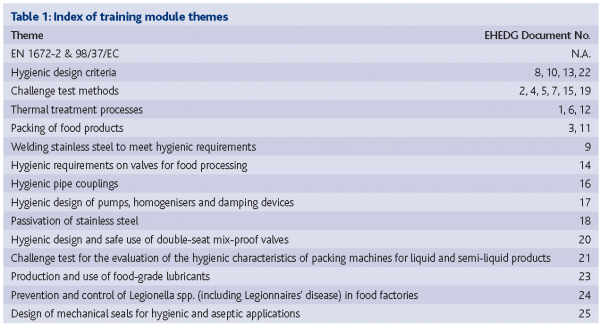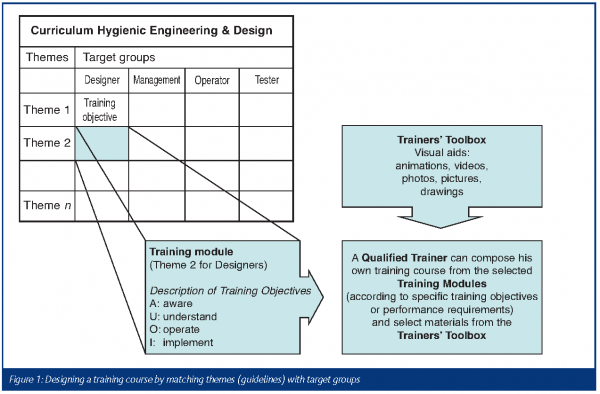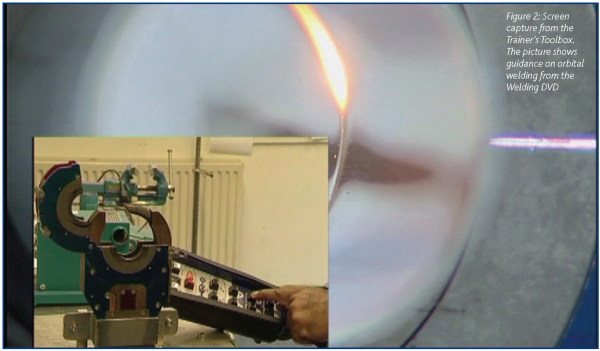The basis for a common approach
- Like
- Digg
- Del
- Tumblr
- VKontakte
- Buffer
- Love This
- Odnoklassniki
- Meneame
- Blogger
- Amazon
- Yahoo Mail
- Gmail
- AOL
- Newsvine
- HackerNews
- Evernote
- MySpace
- Mail.ru
- Viadeo
- Line
- Comments
- Yummly
- SMS
- Viber
- Telegram
- Subscribe
- Skype
- Facebook Messenger
- Kakao
- LiveJournal
- Yammer
- Edgar
- Fintel
- Mix
- Instapaper
- Copy Link
Posted: 29 July 2005 | Bo Boye Busk Jensen, FBE, BioCentrum-DTU, Hilde Cnossen, Jacques Kastelein, TNO Quality of Life and Roland Cocker, Cocker Consulting | No comments yet
Research continues in the area of hygienic engineering and design, particularly in innovative techniques using safe construction materials to develop functional as well as easily cleanable equipment for handling, processing and packing foodstuffs. This is the motivation behind the work of the European Hygienic Engineering & Design Group (EHEDG), which regularly publishes detailed guidelines and guidance on engineering aspects of food production.
Research continues in the area of hygienic engineering and design, particularly in innovative techniques using safe construction materials to develop functional as well as easily cleanable equipment for handling, processing and packing foodstuffs. This is the motivation behind the work of the European Hygienic Engineering & Design Group (EHEDG), which regularly publishes detailed guidelines and guidance on engineering aspects of food production.
Research continues in the area of hygienic engineering and design, particularly in innovative techniques using safe construction materials to develop functional as well as easily cleanable equipment for handling, processing and packing foodstuffs. This is the motivation behind the work of the European Hygienic Engineering & Design Group (EHEDG), which regularly publishes detailed guidelines and guidance on engineering aspects of food production.
To convey this information from research reports and guideline documents to the designers at their drawing boards and production personnel, EHEDG has moved into the area of training and education. Within the HYFOMA project, the subgroup created a Training Facilitator that gives recommendations on training and education in hygienic engineering and design within the EU.
High quality and safety are necessary to sustain the good reputation of European manufactured foodstuffs. The livelihood of many people depends on the success of food manufacturing. Key prerequisites for high quality and safe products are good hygienic design and regular maintenance of the production facilities. The European EHEDG has published approximately 30 guidelines on proper hygienic design of different aspects of food manufacturing. Based on these guidelines and within the scope of the European Network for Hygienic Manufacturing of Food (HYFOMA, QLK1-CT-2000-01359), the Training Facilitator was recently produced.
In preparing the Training Facilitator, the subgroup made the following observations:
- The few training courses currently available in this area are diverse in content and objectives
- Few consultancy companies and research institutes offer very high quality training and consultancy in hygienic design
- Larger food manufacturers may have in-house training capabilities and in general, course content and quality are assessed internally
Scope of document
To provide a basis for a common European approach on teaching hygienic design, the Training Facilitator outlines requirements for trainers and specifies training objectives (learning goals) for defined categories of trainees. Training modules, equivalent to a syllabus, are structured by theme with specific training objectives per target group classification and suggestions for appropriate training levels (target groups).
The themes are based on those developed in published guidelines. They range from generic hygienic design criteria to their application in pieces of equipment such as valves, pipe couplings, pumps, seals etc, to manufacturing processes and test methods (Table 1). A module was also developed on the normative reference EN 1672-2. The index featured on Table 1 is only the first edition; the intention is to expand the themes as new guidelines are developed. The accompanying Trainers’ Toolbox, which consists of DVDs and a CD-ROM, illustrate actual examples and footage of industrial applications – also beyond those listed on the index.
Training modules
To structure all the information contained in the EHEDG guidelines in a manner applicable for teaching, each theme was broken down into training objectives. For each target group (defined below) appropriate training objectives for a theme were selected from a complete list of training objectives for that theme, generating a training module. The four general classifications of trainees identified for the purposes of the modules are Designers, Management, Maintainers and Auditors. Each category of personnel has different learning objectives that need to be addressed adequately in a training course. Each training module is therefore a well-thought out syllabus directed at a particular group of students, with list of training objectives related to the main theme and to the corresponding levels of learning they require.
Target groups
Establishing well-defined target groups is a prerequisite for efficient and effective training. From both a trainer and the trainee’s perspective, it is very difficult to satisfy training objectives when the trainees come with different knowledge and experience levels. From a list of job functions that can benefit from some training in hygienic engineering and design, the following student groups were identified:
- Designers (technical engineering, process development and quality assurance)
- Management, marketing and sales personnel of design/construction companies and food industry
- Operators, Maintainers, Installers and Cleaners
- Auditors, Inspectors, Testers and Certifiers
To find the correct training module the trainer needs to select the theme as well as define his/her target group. Training methods need to be adapted to the background, function and experiences of each group. Hands-on learning will be more efficient to some, while others may learn adequately by traditional classroom methods. Suitable audio-visual aids and supplementary training materials always provide an extra dimension.
Training objectives
Training objectives are essential when planning and conducting a course. They are the basis for the preparation and production of course materials, examples and case studies. The trainer’s task is simplified by using the Training Facilitator, ensuring that training objectives are relevant to each guideline (theme). The Training Facilitator uses the following terminology to describe what trainees are expected to achieve:
- Must be aware of
- Must understand and able to describe
- Must be able to operate hygienically
- Must by able to implement in design activities for equipment and processes that produce safe foods
It is assumed that a person must first be aware in order to understand and must first understand in order to operate or implement.
Trainers’ Toolbox
The Trainers’ Toolbox contains a series of pictures, drawings, movies and animations that illustrate and visualise technical information and practical applications. The contents are a mixture of brand new high quality videos (see Figure 2), images and drawings extracted from the EHEDG guidelines as well as materials and footage collected from several food producers, equipment manufacturers and consultants throughout Europe. Subjects covered include welding, rheology, cleaning methods and practices and routing in a food factory, to cite a few. The Toolbox will be continuously developed, updated and expanded as new guidelines are produced. Assessments and feedback received by trainers using existing materials will also ensure continuous improvement.
Conclusion and perspectives
In the hands of a qualified trainer, the Training Facilitator and Toolbox are ready-to-use instruments to help design comprehensive, streamlined and target-oriented hygienic engineering courses.
EHEDG will organise a number of such courses around Europe for future trainers and end-users. Two levels are envisaged. The Basic level will focus on definitions, principles, generic criteria and basic applications in the industry. The Advanced level courses will be for selected people with some understanding of hygienic engineering and design concepts, plus a practical background in food safety, engineering, microbiology, etc. They will be taught by world-class teachers in hygienic-design courses and will be announced on www.ehedg.org.






Acknowledgements
The HYFOMA project was funded by the European Commission under the Fifth Framework Programme – Quality of Life and Management of Living Resources (QoL), Key Action 1 (KA1) on Food, Nutrition and Health (QLK1-CT-2000-01359). We would also like to thank A.W. Barendsz (TNO), J. Fernandes (Kraft Foods R&D Inc.), M.I. Llorca (AINIA), M.A. Mostert (Unilever R&D), P.Z. Pinto (AESBUC) and M. Reij (Wageningen University) for their contribution to the Training and Education document.
Issue
Related organisations
Cocker Consulting, European Hygienic Engineering & Design Group (EHEDG), Hilde Cnossen, TNO Quality of Life




